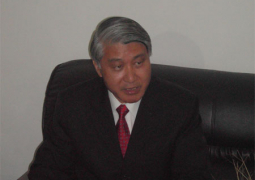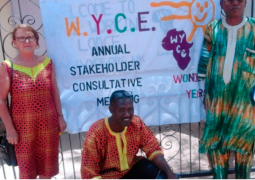Music plays a very important role in The Gambian culture were drums make of carved wood and goatskin seems a simple instrument, but use of the drum is not limited to musical entertainment, such as in music from the Americas and Europe. It has a serious implication in many societies across the continent and many West African tribes are well known for their use of drumming in daily activities and special events and a native speaker of a language can often perceive an actual message in the music. This effect also forms the basis of drum languages and in the days gone by drumming was used as a way of communicating news from village to village, for example to inform the members of their respective tribes about major news, such as death, meeting or celebration within the tribes. In the past, it was used as a warning of imminent attack and the drum is the sign of life, its beat is the heart beat of the community and such is the power of the drum to evoke emotions, to touch the souls of those who hear its rhythms. The beating of the drum is an opportunity to give one another a sense of belonging and of solidarity and it is high time now to connect with each other, to be part of the collective rhythms of the life in which young and old, rich and poor, men and women are all invited to the society.
On Wrestling, the beat of the drum is to evoke the emotion of the contester and create an excitement in the arena. Modern traditional wrestling has evolved as a modified version of the real combat techniques and traditionally, all the boys in a village where taught how to wrestle, with ones that showed skills and promised held in high regards as a man regardless of class. Wrestling is one of the oldest traditional sports in The Gambia, and wrestling festivals are a common occurrences and the objective simply to throw one’s opponent to the ground and the first wrestler down in the bout loses the contest. In wrestling, leg locks are permitted but there are no patterned arm or headlocks or complicated points systems and the most common style of grappling is shown among Mandinkas, Fulas and Jolas. It involves each opponent grabbing each other’s trunks at the start of the bout and after some strategic manoeuvrings each one would attempt to throw the other on the ground. Sereres on the other hand, prefer to go straight for the legs and render their opponent cuff-balance and traditional music is mostly functional in nature. There are for example, many different kinds of work songs, some of the drumming that goes on in the middle of the day even helps women and men of the tribes get daily chores done more quickly as the drums allow them to follow a rhythm while they work. Ceremonial or religious music accompanies childbirth, marriage, hunting and even political activities.
The Balafone and the Kora that produces in harp-like sound often accompany ceremonial music. The combination of instruments used depends on the tribe.
The male griots or singers are born into the profession and they often act as solo or duo instrumentalists. They are traditionally heard at weddings and naming ceremonies to bring good luck with their melody songs and historical recitations.
Read Other Articles In Article (Archive)



